February is LGBT+ History Month in the UK, and you may see it marked with rainbow flags online and in real life.
You might be familiar with the different pride flags and their meanings, but did you know the LGBTQ+ community has many other symbols representing them too? Here are some modern and historic symbols of alliance, protest and pride.
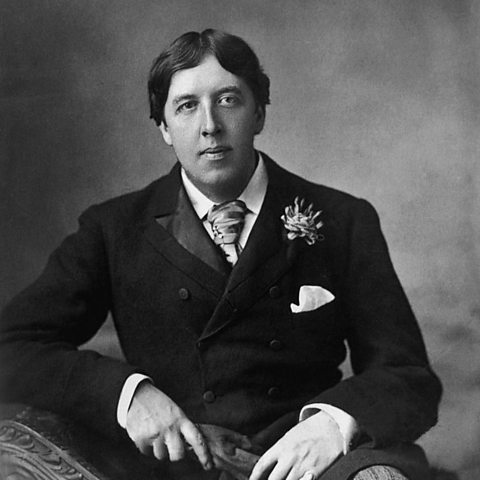
6 pride symbols explained
1. Say it with flowers
Floriography is a fancy term for the coded language of flowers, and has been used for thousands of years in Europe, Asia and Africa. Depending on where youвҖҷre from, a bouquet arrangement could express anything from friendship to romantic love to detailed declarations of dislike!
Many flowers have been associated with LGBTQ+ movements, but most famously is the green carnation. Gay writer and poet Oscar Wilde popularised the symbol when he asked his friends to wear them on their lapels to a showing of his play Lady WindermereвҖҷs Fan in 1892. It then became a light-hearted code for men who were attracted to other men.
Similarly, violets were a popular symbol of love between women up until the early 1900s. Ancient Greek poet Sappho mentioned вҖңviolet crownsвҖқ, lavenders and the colour purple frequently in her poems about women and so violets became synonymous with desire. Before the late 19th Century, when purple dye was more accessible and the colour became a trend, it was common for ladies to gift each other violets as a subtle expression of love.


2. A secret letter
In 1970, a lowercase Greek letter lambda (О») was chosen by gay activist Tom Doerr as the symbol of the New York chapter of the Gay Activists Alliance (GAA). GAA literature states that Doerr chose the symbol for its meaning in chemistry and physics: "a complete exchange of energy вҖ“ that moment or span of time witness to absolute activity".
The lambda became associated with Gay Liberation and later recognised as an LGBT symbol, being used as such by the International Gay Rights Congress in Edinburgh, the gay rights organisation Lambda Legal, and the Lambda Literary Foundation, among others. Because of its official adoption by the GAA, the lambda became a way for the gay community to identify each other. The letter could be easily mistaken for the Greek letters of university fraternities, so those who weren't in the know didn't look twice.

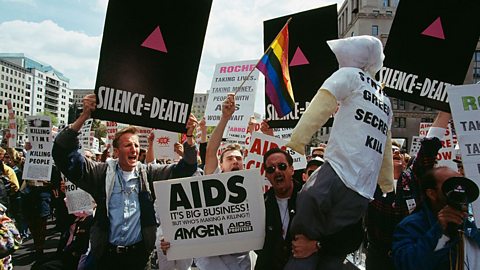
3. A badge of shame reclaimed
While this symbol has a tragic origin, it has since been reclaimed as a symbol of power and remembrance. During WW2 in Nazi Germany, gay men who were prisoners of concentration camps were labelled with a downward-pointing pink triangle. It wasnвҖҷt until the 70вҖҷs that it was reclaimed by the gay community and began cropping up in other LGBT circles around the world. In 1986, six New York City activists created a poster with the words вҖңSILENCE = DEATHвҖқ and a bright pink upward-facing triangle, meant to call attention to the AIDS crisis. The poster was soon adopted by the organisation ACT UP and became a lasting symbol of the AIDS advocacy movement.
Although the pink triangle has been reclaimed as an empowering symbol, it serves as a reminder of LGBT persecution throughout history, and as recognition of the struggles LGBTQ+ communities face around the world today.


4. Double-edged pride
In Greek and Roman mythology, a labrys is a double-headed axe often associated with female goddesses including Artemis and Demeter. The labrys lesbian flag was created in 1999 by graphic designer Sean Campbell, and published in June 2000 in the Palm Springs edition of the Gay and Lesbian Times Pride issue as a symbol of strength and self-sufficiency.
The design involves a labrys superimposed on an inverted black triangle, set against a violet background. The violet colour was in reference to Sappho, and the black triangle was also used in Nazi concentration camps to mark 'asocial' people, which included lesbians, Romani and Sinti women, sex workers, addicts, the homeless and anyone considered 'work-shy'. In the 1970s, a US mainstream feminist organisation known as the National Organisation for Women (NOW) referred to lesbian feminists as a вҖңlavender menaceвҖқ, as their president Betty Friedan claimed they presence would stereotype feminists as "mannish" and "man-haters". This term was reclaimed as the name of a lesbian feminist movement, and eventually the labrys flag was adopted as a symbol of empowerment as gay women made their own feminist spaces.

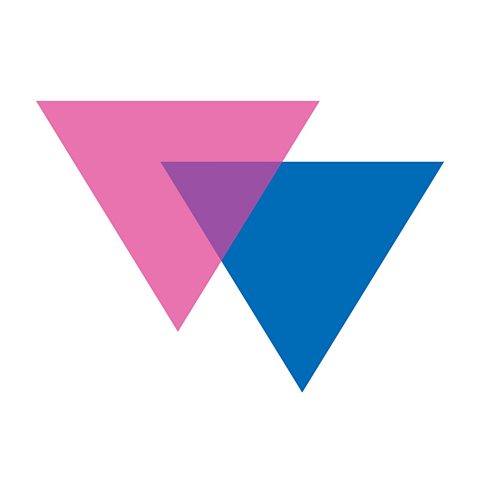
5. Both sides of the moon
Though the bi pride flag is the most well-known symbol of bisexuality, the вҖҳbi-anglesвҖҷ symbol has been around even longer. Consisting of a downward facing pink triangle overlapping with a blue one, it was the first symbol to use the pink, purple, and blue colour scheme to represent bisexuality, inspiring the colours for the flag according to its creator Michael Page. The exact origin of the bi-angles symbol is unknown, but in 1998 Vivian Wagner designed the double-sided crescent moon symbol as an alternative to the bi-angles.
The intention was to distance the community from the association of violence in the pink triangle, but show solidarity to those affected by AIDS in its colours. The double moon symbol consists of two crescent moons, each featuring a gradient from blue to pink, creating lavender where the two main colours meet. Wagner also hoped the symbol stood to represent gay-lesbian-bi solidarity.


6. Transcending tradition
Interlocking male and female signs, from the alchemic and astronomic symbols of Mars (вҷӮ) and Venus (вҷҖ), have been used as a traditional symbol to represent gay and lesbian love for many years. In 1993, transgender activist Holly Boswell had the idea to combine the two symbols along with a hybrid symbol into a triad (вҡ§) to represent transgender and genderqueer communities.
ItвҖҷs since become the most recognised transgender symbol in the world, and inspired others such as the pansexual symbol, which rearranges the triad into a вҖҳPвҖҷ shape. Variations include the transfeminism symbol which features the Venus symbol encircling a fist raised in power, and the trans symbol of equality which features an equals sign (=) inside the circle.
This article was published in February 2021 and last updated in May 2023

How Pride went from politics to pop
The visibility march that gradually became about the headline acts.
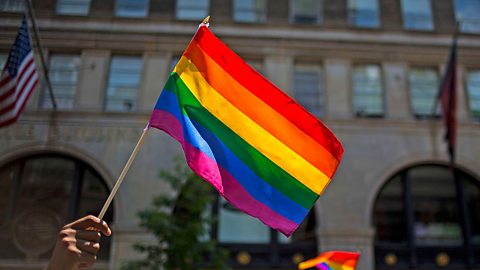
We look at how LGBT+ History Month has changed since its creation.
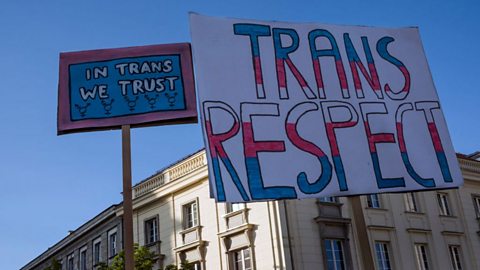
The LGBT icons you need to know about
They took a stand in an attempt to bring about change.
